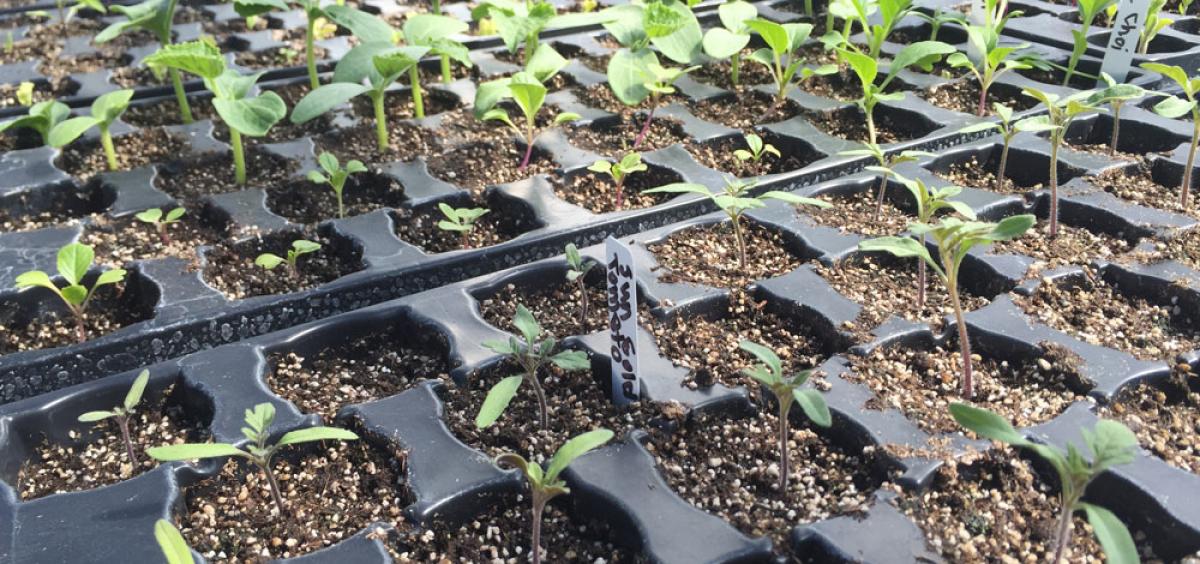
CORVALLIS, Ore. – While you’re battling the winter blues, make your own seed-starting mix and plan for the gardening days ahead.
Home gardeners can start vegetable and flower seedlings indoors from four to 12 weeks before the last average spring frost in their area, which means it’s time to get started. Making homemade planting medium can be more economical than buying a sterile mix at the store, said Brooke Edmunds, a horticulturist with Oregon State University’s Extension Service.
A good germinating mix must be fine and uniform, yet well-aerated, loose and free of pests, diseases and weed seeds, Edmunds said. It also should be low in fertility and total soluble salts, yet capable of holding and moving moisture.
But beware, she warned. Soil straight from your backyard just won’t do the job.
Typical backyard soil is too compacted, full of weed seeds and it is not pasteurized, causing seedling diseases and death. Native soil often does not drain as well as seedling mixes. And it can develop a crust that prevents seedlings from pushing though.
Edmund’s recipe for a good basic pasteurized medium for growing seedlings is a mixture of one-third pasteurized soil or compost, one-third sand, vermiculite or perlite, and one-third coconut coir or peat moss.
“Many people just use coconut coir or peat moss (both have environmental consequences) and half perlite, vermiculite or sand, and this combination seems to work well, too,” she said.
To pasteurize a small quantity of soil or compost in an oven, put the slightly moist soil or compost in a heat-resistant container or pan. Cover with a lid or foil. Place in a 250-degree oven; check the temperature periodically using a candy or meat thermometer. When the mix reaches 180 degrees, cook for an additional 30 minutes. Avoid overheating it, as the structure of the soil may be damaged, rendering it useless as a seedling soil ingredient.
Mix pasteurized soil or compost with peat moss or coconut coir. Add sand, vermiculite or perlite. All ingredients are available at most nurseries and garden stores.
Another task to complete before the start of seed-sowing is to clean your pots, trays and flats. After washing, rinse the containers in a solution of 1 part chlorine bleach to 9 parts water to kill remaining plant disease microorganisms that could weaken or kill your tender young seedlings.
For information about starting seeds, see Extension’s publication Propagating Plants from Seeds.
About the OSU Extension Service: The Oregon State University Extension Service shares research-based knowledge with people and communities in Oregon’s 36 counties. OSU Extension addresses issues that matter to urban and rural Oregonians. OSU Extension’s partnerships and programs contribute to a healthy, prosperous and sustainable future for Oregon.
Brooke Edmunds, 541-713-5006, [email protected]
Click photos to see a full-size version. Right click and save image to download.